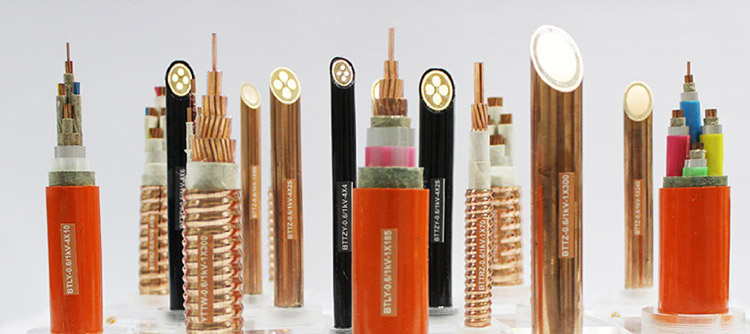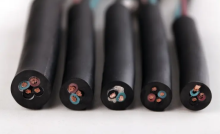Kabloya Agir-Resistant çi ye? Taybetmendî û Serîlêdanên Wê Çi ne?


In industries and buildings where fire safety is crucial, fire-resistant cables play a significant role in ensuring the continuous operation of vital systems during a fire. These specialized cables are designed to resist the spread of fire and maintain their functionality, even under extreme heat. In this article, we’ll explore what fire-resistant cables are, their key characteristics, and their wide range of applications.


Kabloya Agir-Resistant çi ye?
Fire-resistant cables are specifically engineered to withstand high temperatures and continue functioning during a fire. Their main purpose is to ensure that critical circuits, such as emergency lighting, alarms, and communication systems, remain operational, even under severe fire conditions. These cables are different from flame-retardant cables, which are designed to prevent the spread of fire but may not continue functioning in extreme temperatures.
Fire-resistant cables are typically used in situations where maintaining circuit integrity during a fire is essential. They are designed to meet various international safety standards, wekî IEC 60331 (for fire-resisting characteristics of cables), BS 6387 (for fire-resisting characteristics of cables with circuit integrity), and others.
How Fire-Resistant Cables Work
Fire-resistant cables are designed to endure fire for a specific period while keeping electrical systems operational. They use materials that have high thermal stability, such as mica or mineral-based insulation, which does not degrade easily when exposed to fire. Additionally, the conductors are typically covered with fire-resistant compounds that form a protective barrier, preventing electrical failure.
These cables work by providing a physical and chemical barrier to the fire. The insulation materials used in these cables do not melt or combust easily, maintaining the structure and electrical integrity of the cable even when subjected to intense heat. The ability of fire-resistant cables to maintain power and data transmission during a fire is what sets them apart from regular cables.
Characteristics of Fire-Resistant Cables
Fire-resistant cables have a range of characteristics that make them suitable for high-risk environments:
- Heat Resistance
Fire-resistant cables are engineered to withstand high temperatures, often up to 750°C or higher, for a prolonged period. This makes them suitable for use in areas prone to fire hazards, such as chemical plants, power plants, and high-rise buildings. - Circuit Integrity
One of the main benefits of fire-resistant cables is that they maintain circuit integrity during a fire. This means that critical systems, such as emergency lighting, alarms, and control circuits, can continue to operate even when exposed to flames. - Xweparêzî
The materials used in fire-resistant cables are highly durable and can resist not just fire but also mechanical stress and corrosion. This makes them suitable for use in harsh industrial environments. - Low Smoke and Halogen-Free (LSZH)
Many fire-resistant cables are designed to produce low smoke and are free of halogens, reducing the release of toxic gases during combustion. This feature is crucial in buildings where the presence of toxic fumes could endanger human lives. - Chemical Resistance
These cables are often resistant to chemicals and oils, ensuring that they can be used in environments where such substances are present without compromising their performance. - Compliance with International Standards
Fire-resistant cables are manufactured to meet stringent international fire safety standards, ensuring their reliability and performance under extreme conditions. Standards like IEC 60331, BS 6387, and EN 50200 specify the requirements for fire resistance and circuit integrity.
Types of Fire-Resistant Cables
There are various types of fire-resistant cables, each designed for specific applications and environments:
- Mica Tape Insulated Cables
Mica is a mineral with excellent thermal and electrical insulating properties. Cables insulated with mica tape can withstand very high temperatures and are commonly used in critical applications such as emergency power systems and communication networks. - Mineral Insulated Cables (MI Cables)
Mineral-insulated cables consist of copper conductors inside a metal sheath, with magnesium oxide insulation. These cables are extremely durable and fire-resistant, often used in buildings where fire safety is a priority, such as hospitals and airports. - Low Smoke Zero Halogen (LSZH) Cables
LSZH fire-resistant cables are designed to emit minimal smoke and no halogen gases when exposed to fire. They are commonly used in enclosed spaces like tunnels, mass transit systems, and data centers where smoke and toxic gases can cause significant harm. - Polymeric Fire-Resistant Cables
These cables use advanced polymeric materials as insulation, which offer high thermal stability. They are often used in general building services and commercial spaces where maintaining electrical supply during fire incidents is necessary.
Applications of Fire-Resistant Cables
Fire-resistant cables are used across a wide range of industries and settings, particularly in high-risk environments where fire hazards are prevalent. Here are some of the key applications:
- Building and Construction
Fire-resistant cables are often installed in commercial buildings, high-rise structures, and residential complexes. They are critical for powering emergency systems such as fire alarms, sprinklers, elevators, and escape route lighting. - Transportation Infrastructure
In transportation systems such as railway stations, airports, and tunnels, fire-resistant cables are essential for maintaining communication, signaling, and emergency systems. These cables ensure that safety systems can continue to function during a fire, allowing for the safe evacuation of people and the control of fire hazards. - Pîşesaziya Petrol û Gazê
The oil and gas industry is highly vulnerable to fire hazards due to the presence of flammable materials. Fire-resistant cables are used to power control systems, pumps, and safety equipment in refineries and offshore platforms. Their ability to operate under high temperatures is crucial in preventing catastrophic failures during a fire.
- Power Generation and Distribution
Fire-resistant cables are critical in power plants and substations to ensure that essential equipment remains operational during a fire. They are used in control systems, circuit breakers, and emergency power supplies, ensuring a continuous power supply even in the most hazardous conditions. - Healthcare Facilities
Hospitals and healthcare facilities require reliable fire-resistant cables for critical systems such as life support, emergency lighting, and communication networks. These cables ensure that power is maintained to life-saving equipment even in the event of a fire. - Data Centers
Fire-resistant cables are also used in data centers where the protection of sensitive information is critical. In the event of a fire, these cables help to prevent data loss and maintain communication systems for emergency responses.
Benefits of Fire-Resistant Cables
The benefits of using fire-resistant cables extend beyond just maintaining circuit integrity. These cables help to protect lives, equipment, and infrastructure by ensuring that critical systems continue to operate during a fire. Some of the key benefits include:
- Enhanced Safety: Fire-resistant cables reduce the risk of electrical failure during a fire, ensuring that emergency systems such as alarms, ronahîkirin, and communication remain functional.
- Reduced Downtime: In industrial settings, fire-resistant cables help to prevent downtime by ensuring that essential processes continue to operate, even during a fire.
- Compliance with Safety Regulations: Installing fire-resistant cables helps businesses and buildings comply with safety regulations, reducing the risk of legal liabilities.
- Protection of Equipment: By preventing the spread of fire to other areas, fire-resistant cables protect valuable equipment from damage, minimizing repair costs.
Fire-resistant cables are essential components in fire safety systems, offering a reliable solution to maintain circuit integrity during a fire. Their ability to withstand high temperatures and maintain functionality under extreme conditions makes them a critical choice for many industries, including construction, transportation, healthcare, and power generation. By installing fire-resistant cables, businesses and building operators can ensure the safety of people and property, minimize downtime, and comply with international fire safety regulations.
In a world where fire hazards can lead to significant loss of life and property, fire-resistant cables are a vital investment for safeguarding critical infrastructure.
Recent Posts
Storms and Floods! How Waterproof Cables Protect Power?
Introduction In recent years, heavy rainfall and flooding have become increasingly frequent worldwide, causing severe…
Rola Pîşesaziya Cable û Dîwanên li Aboriya Circular
Introduction As sustainability becomes a global priority, industries across the spectrum are reevaluating their operations…
Pîşesaziya kabloyê çawa dikare pêşbaziya zincîra gerdûnî ya gerdûnî bike?
The global supply chain is an intricate and essential network that connects manufacturers, distributors, retailers,…
Bandora enerjiya nûvekirî ya li ser daxwaziya kabloyê
Introduction The global shift toward renewable energy has become a cornerstone of efforts to combat…
Pêşbaziya Trendê ya Kabloya Global 2025
The global cable market is integral to a wide array of industries, including energy, telecommunications,…
AI and Blockchain: Revolutionizing Cable Manufacturing and Management
The cable manufacturing industry, a cornerstone of global infrastructure, is undergoing a transformative shift. Ew…


